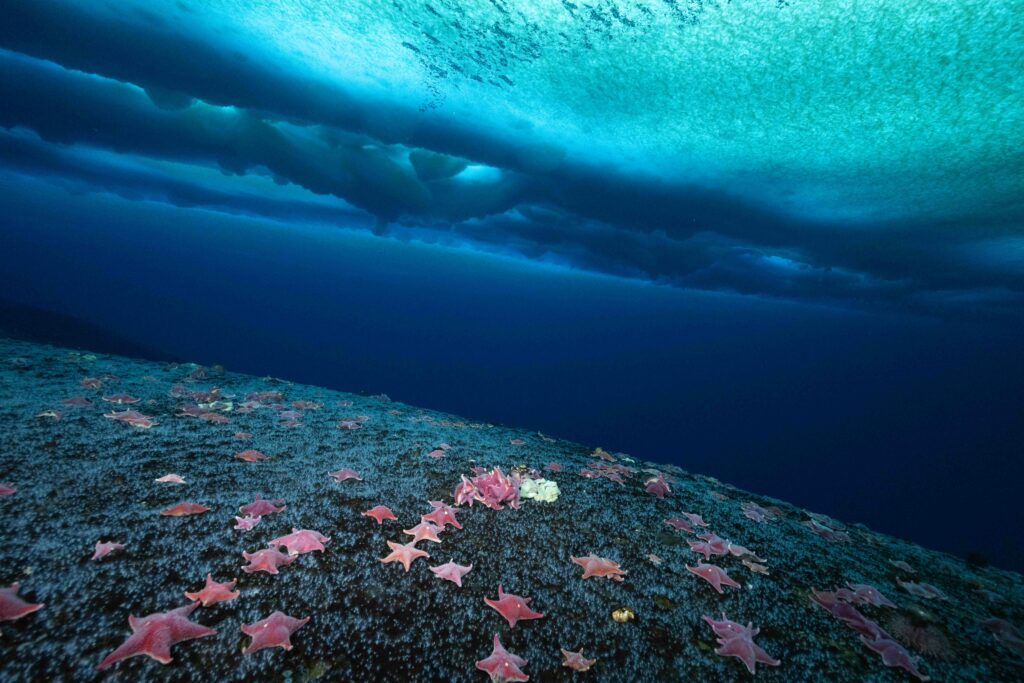
One of the main research questions we have focuses on the research site known as Cinder Cones. This is an area where methane leaks from the seafloor and is harvested by microbes for energy. Over the last 10 years the obvious microbial communities have been slowly replaced by dense beds of sand anemones (Edwarsia). This is what it looks like this year – tons and tons of them everywhere.

There are also tons of the star fish that seem to have come into this region. More on that in a future post, but there appears to be an interesting relationship between the stars and what the seep is doing to the ecosystem.

You can still see the small areas of microbial mats being present but they are far more reduced than previous years. However our research is showing that there is still a lot of methane being released. In the image above you can see the small patches of white which are indicative of where methane is seeping from the seafloor.

This area has become a real interesting and yet perplexing place to research, but like all good research sites – it keeps surprising us with its novelty and unexpected patterns. This all lets us better understand how the greenhouse gas methane is kept out of the atmosphere, one microbe at a time.

